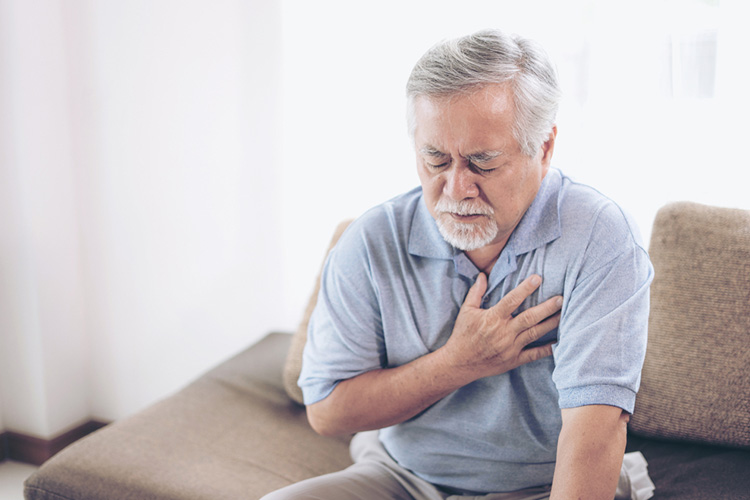Awareness of Heart Attacks
All body cells require blood that carries oxygen to stay alive (vital). A heart attack occurs when the balance between blood supply and demand is disrupted.
Symptoms may include:
- Chest pain or left arm pain.
- Pain can also radiate from the right shoulder, left arm, or even both arms.
- Shortness of breath in diabetic patients
- Nausea Indigestion in the chest
- Discomfort in the chest
- Cold sweat
If symptoms only occur occasionally, things that can be done include:
- Consultation and EKG/Heart recording examination
- Echocardiography (Heart ultrasound)
- Exercise test / Treadmill
- Coronary angiography:
- Heart CT Scan
- Cardiac catheterization
Cardiac catheterization is useful for:
- Viewing and assessing heart or coronary blood vessels.
- If there is narrowing or blockage, it can be followed by intervention or opening the narrowing or blockage vessel with a balloon, and to prevent re-narrowing, a stent or ring can be inserted.
When is catheterization necessary?
- There are symptoms (chest pain/shortness of breath) or signs of coronary heart disease due to narrowing so that the heart's oxygen is insufficient.
- Heart attack/myocardial infarction or death of heart muscle due to blockage of blood vessels.
How to keep the heart healthy?
- Avoid smoking and tobacco
- Be physically active every day
- Eat healthy foods/healthy diet
- Maintain ideal body weight
- Maintain stable/normal blood pressure
- Maintain healthy cholesterol levels
- Maintain normal blood sugar levels
A healthy diet includes:
- Fruits and vegetables
- Grains
- Nuts
- Seeds
- Fish (especially those with omega-3 fatty acids), skinless poultry, and other plant-based alternatives
- Fat-free and low-fat dairy products
- Healthier fats
Healthy diet tips:
- Choose wisely
- Compare nutrition information on the label and choose products with the lowest amount of salt, sugar, saturated fat, and trans fat.
- Especially avoid hydrogenated oil.
- Watch calorie intake.
- To maintain weight, only consume as much as is used in physical activity.
- Appropriate food portions Eat a variety of foods to meet the body's nutritional needs
- Prepare and eat healthy food at home that easier to control the content.
Physical activity:
Physical activity is any activity that makes you move your body and burn calories.
Exercise:
Benefits of exercise:
- Reduced risk of cardiovascular disease, high blood pressure, and stroke
- Reduced risk of lower digestive and breast cancer
- Reduced risk of diabetes
- Reduced risk of osteoporosis
- Reduced risk of depression and dementia
- Reduced body fat
- Improved metabolic processes
- Improved joint and muscle movement
- Improved oxygen transport to the body
- Improved sense of well-being
- Improved strength and endurance.
Body Mass Index (BMI) : Body weight divided by (height)² = kg/m2
Categories for the Asia Pacific region:
- ≤18.5 = underweight
- 18.5-22.9 = normal
- 23-24.9 = pre-obese
- ≥25 = obese
Realistic Weight Loss:
- Gradual and continuous weight loss of 0.5-1 kg per week is more successful in maintaining weight stability.
- Even a 5-10% reduction in total body weight can result in improvements in blood pressure, blood cholesterol, and blood sugar.
- To lose 0.5 kg/week, daily calorie intake must be reduced by 500 calories (= 3500 calories/week).
Blood Pressure:
Target:
- Systolic Blood Pressure < 140 mmHg
- Diastolic Blood Pressure < 90 mmHg
Blood pressure targets will be lower in individuals with:
- Diabetes mellitus
- Kidney disease
Stress Management:
- Positive talking
- Prayer
- Engaging in hobbies
- Exercise
Dr. Denio A. Ridjab, Sp.JP, FESC, FIHA.
